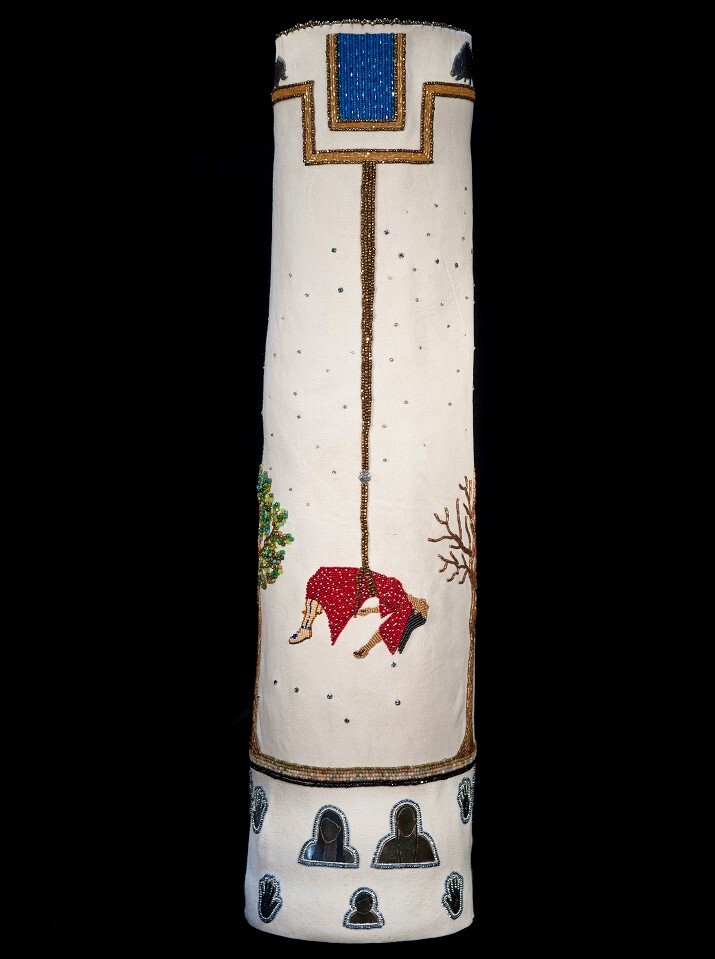
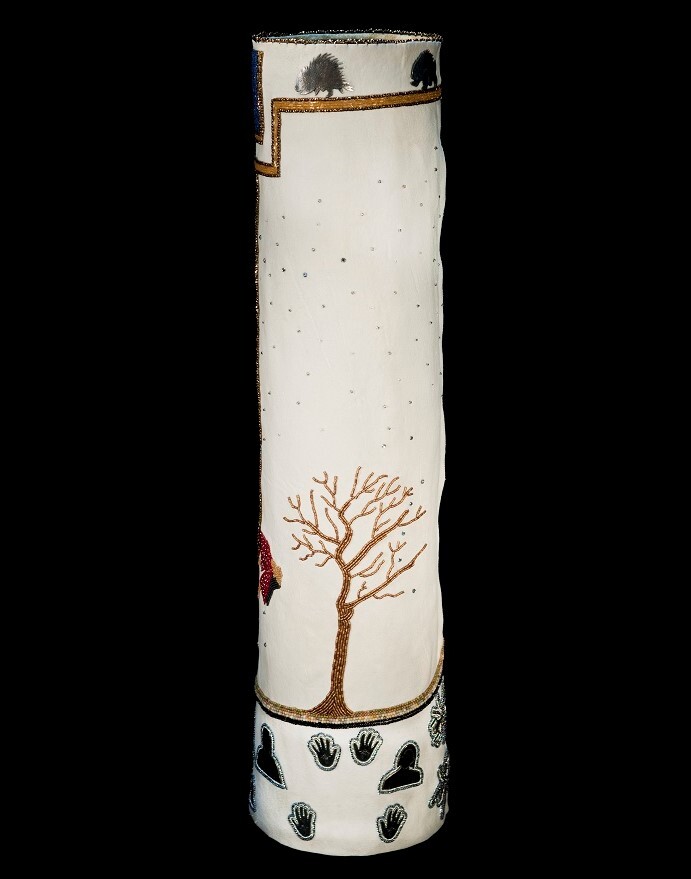
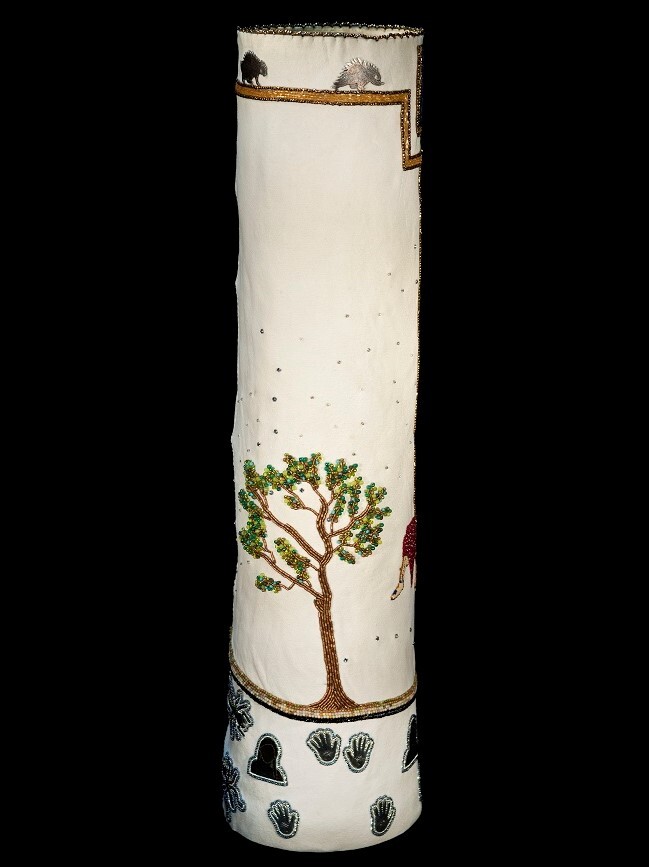
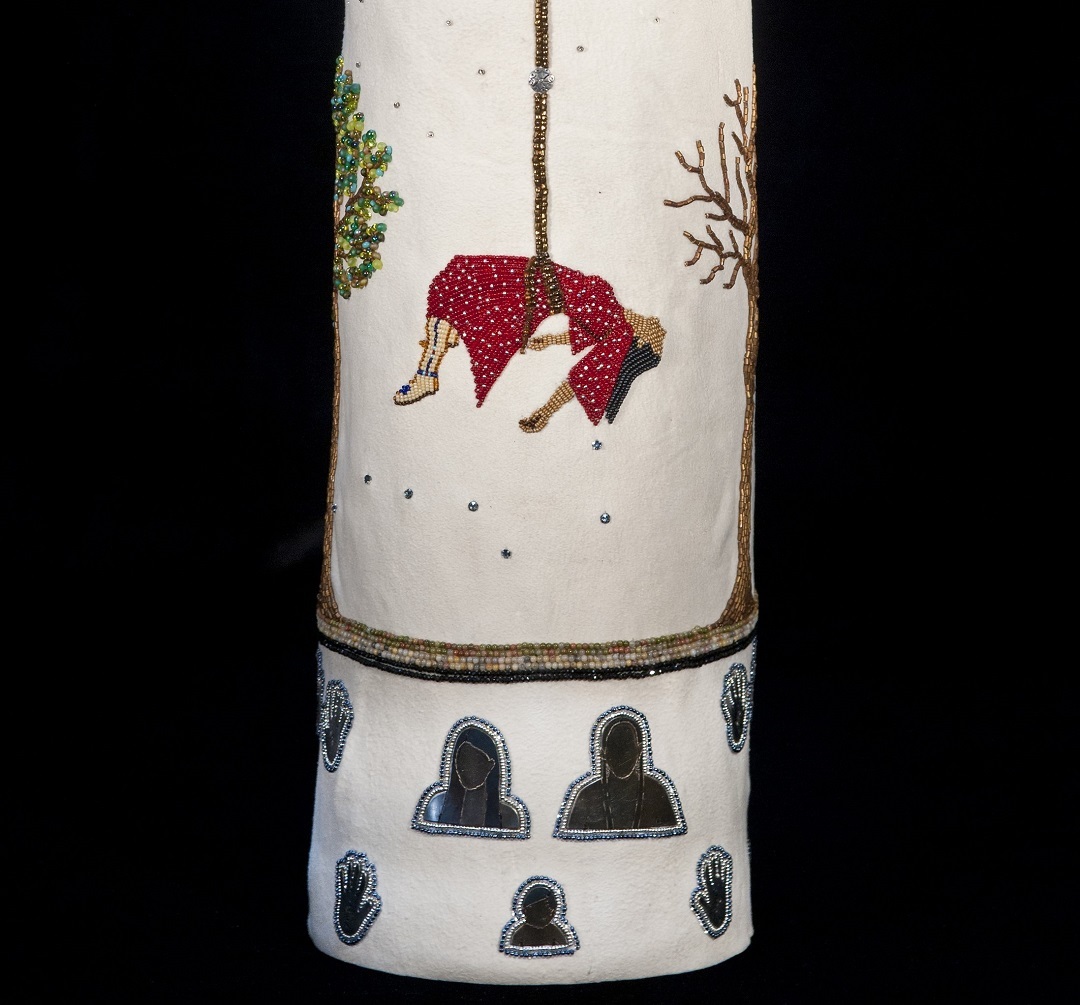
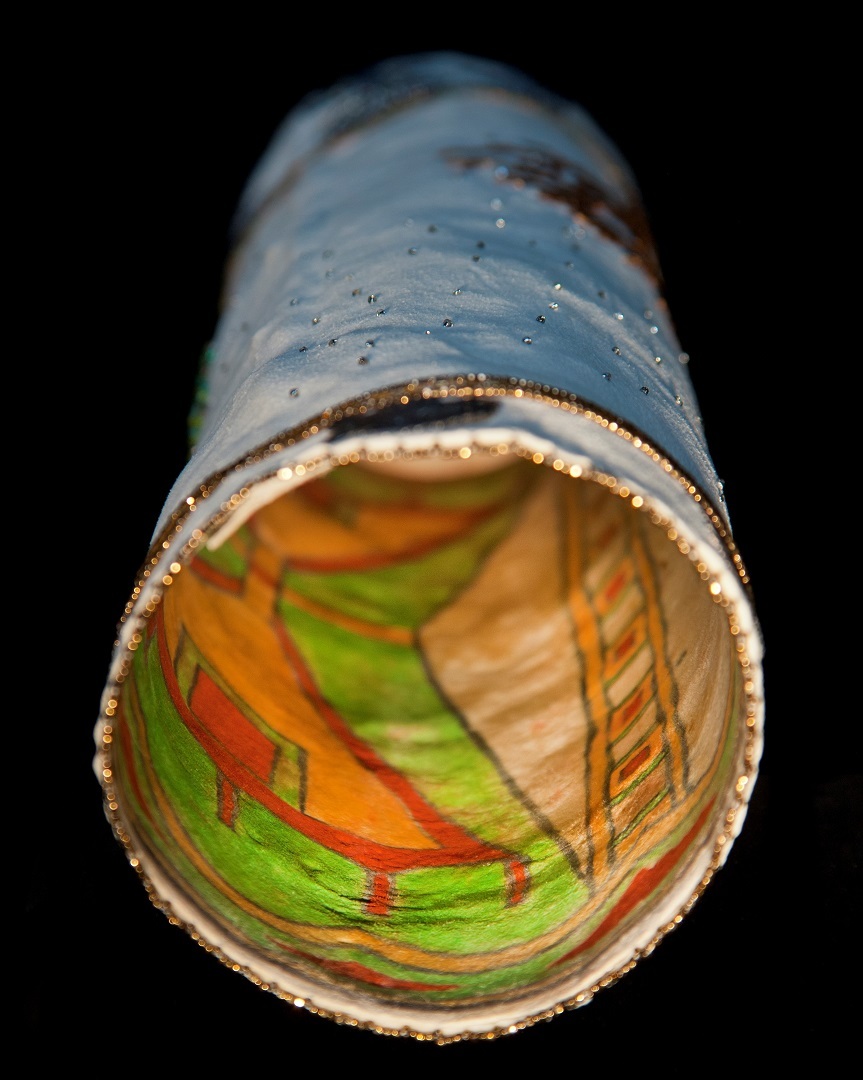
Between Worlds: Beaded Rawhide Vessel
This vessel is made from two deer. One was used in the rawhide container and the other in the beaded buckskin cover. These deer hides were among my mother’s things after her passing in 2015. This piece is particularly personal to me, it was a way for me to reflect on Kiowa stories, Kiowa ways of being and Kiowa ways of seeing the world. This piece has helped me come to terms with the loss of my mother and to honor the person she created in me, a proper Cauigu Mah.
I made this vessel in the shape of the painted rawhide containers that were customarily used for war bonnets and eagle feathers. The interior is painted with my version of an abstracted Kiowa rawhide painting. These paintings and this abstract style was a visual language used by women (the men were the representational painters) on rawhide containers that held their families most valuable possessions. This abstract style of painting is the foundation for abstract Kiowa beadwork, a distinct visual language that still exists today. This vessel represents my desire to interpret and hopefully pay homage to this incredible aesthetic and technical movement among Kiowa women artists.
The piece can be visually read on three planes: the Underworld, this World, and the Cosmos. Each of these planes are illustrated with multiple stories, using images from Kiowa cosmology and referencing a Kiowa visual aesthetic.
On the lower section, the people wait, in shades of grey in the Underworld. They wait for Sane-day, our trickster to find them and pull them into this World. With the people, the ants reference Sane-day’s story of death—their halved bodies a reminder of our mortality.
In the plane above, in this World, I transposed drawings by Silverhorn for the two trees. In the late 1800’s Silverhorn drew a pictorial calendar that was collected by James Mooney. Masterfully, Silverhorn used multiple versions of the same tree to represent time in his calendar drawings. In my piece, I use Silverhorn’s visual iconography to represent Summer to the left and Winter to the right.
Above, in the Cosmos, is the Big Dipper spinning around the North Star embedded in the rope around the Mother’s body. The Big Dipper represents both Sane-day’s hand print in the sky (in the handle) and the four Solstices that mark the Sun’s passage. Below the Mother and just above the horizon are the stars of the Dipper aligning to show Fall. To the right of the Mother, the Dipper begins to spill into the Winter tree. Above the Mother, and far above the horizon, the Dipper is fully tipped in Spring. And to the left of the Mother, the Dipper hangs above the Summer tree. Across all of Cosmos is the Milky Way, the place Kiowas go upon death. And, at the very top of the Cosmos is a door. To either side of the door are male and female porcupines. For the Kiowa, the porcupine symbolically represents the Sun.
And suspended at a point of intersection between worlds is the Mother. The Kiowa story of the Mother is like many other human stories of the Mother. Though the details may differ, similarities run through time and place and shades of this story can be seen on every continent. In the Kiowa story, the Sun falls in love with an Earth child. He brings her to his Sky World and they have a son, a child of two worlds: human and god, Earth and Cosmos. He is the Sun Boy. His human mother becomes incredibly lonely for her home and her people. Pulling a forbidden root, she creates a doorway to her home world. She sees her people moving across the land below her and begins planning her secret return. Over several days, while her husband is gone, she braids a rawhide rope to lower herself and her child. On the day she plans her escape, she wraps too much of the rope around herself and her son. She is left dangling from the Sky World. Her husband returns and throws a wheel at her, killing her but leaving her son, one of the Kiowas most Holy Beings, alive and alone in his mother’s world, in this World.
Teri Greeves (Kiowa), 2016
Collection of Birmingham Museum of Art, Birmingham, AL (click HERE to go to museum online collection)
